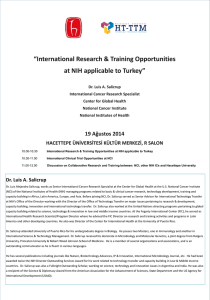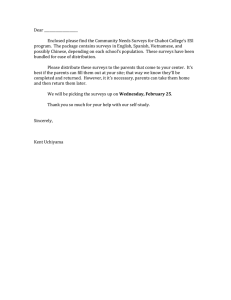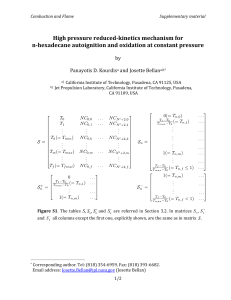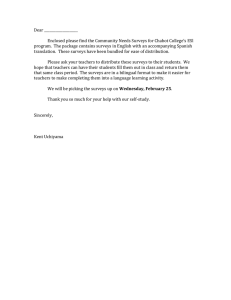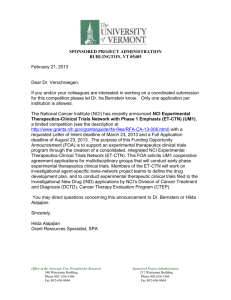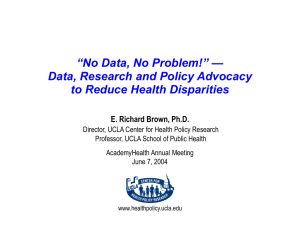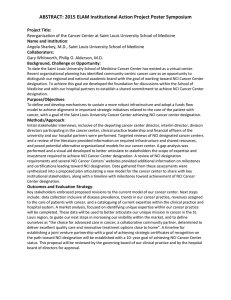Harmonized Federal, State, and Local Surveys Would Enhance
advertisement
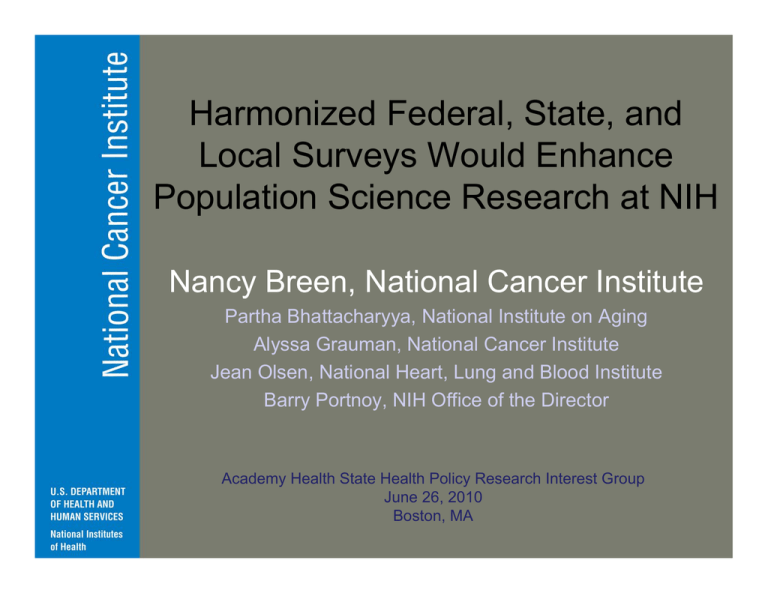
Harmonized Federal, State, and Local Surveys Would Enhance Population Science Research at NIH Nancy Breen, National Cancer Institute Partha Bhattacharyya, National Institute on Aging Alyssa Grauman, National Cancer Institute Jean Olsen, National Heart, Lung and Blood Institute Barry Portnoy, NIH Office of the Director Academy Health State Health Policy Research Interest Group June 26, 2010 Boston, MA Population-based Data Needed to Support Research at Local, State, and National Levels • Research capacity is limited by lack of regularly collected high-quality population-based data at the local level • Survey data are needed to capture portions of the population that are not served or are underserved by healthcare • Surveys can systematically collect data on the non-institutionalized population for a range of health-related characteristics • Survey data on population characteristics provide critical information for understanding disease prevention and control Background: National and Local Health Surveys at NCI • 1987: NCI begins collecting national cancer control surveillance data using the NHIS • 1999: Outside advisory group recommends that NCI enhance ability to improve local and regional data collection to measure: - Health disparities in minority and underserved populations - Trends in behaviors of at-risk groups. • 1999-2010: NCI’s Division of Cancer Control and Population Sciences supports CHIS to fill research gaps in local and state cancer control data NCI Research Collaborations Enhance the Value of CHIS • 2006: NCI and the NIH Office of the Director (OD) co-fund a study to evaluate the impact of CHIS • 2008: NCI and UCLA co-host the first annual Breakfast of Champions meeting at APHA • 2009: NCI hosts a CHIS Methods Workshop • 2010: NCI, NIH-OD, and UCLA, along with the National Heart, Lung and Blood Institute and National Institute on Aging complete a study to systematically inventory innovative statewide local health surveys across the U.S. Key Findings for NIH from Study of Innovative Local Health Surveys • 11 independent surveys identified that routinely collect info on health status and conditions, health service use, insurance, and socio-demographics for the entire state and some localities • Interviews with “champions” from 11 surveys revealed: - Champions recognize value of harmonizing data with other states and national data and are willing to work toward that goal - Local surveys are innovating independently without coordination - Champions want to retain ability to control and release data they collect - CHIS provides a model for statewide local surveys in terms of coverage, design, dissemination and impact. Utility of Harmonized Health Data • Health data harmonized at the local, state and national level would be useful to NIH for: - Surveillance and tracking - Identifying and addressing health disparities - Generating Hypotheses - Evaluating impact of programs and research

